1 laser TV contrast projection
Home Theater Network () At the beginning of last month, a set of laser cinema systems released by Hisense once again sparked a discussion about laser TV related issues. The system consists of a laser projection host, Fresnel passive bionic screen and 5.1-channel professional home audio. It is the world's first laser cinema product with cinema, smart TV and home audio functions. On the surface, this laser cinema system and home projection applications are very similar, so people can not help but compare the two, but can not rely on subjective consciousness to determine who is good and who is bad.
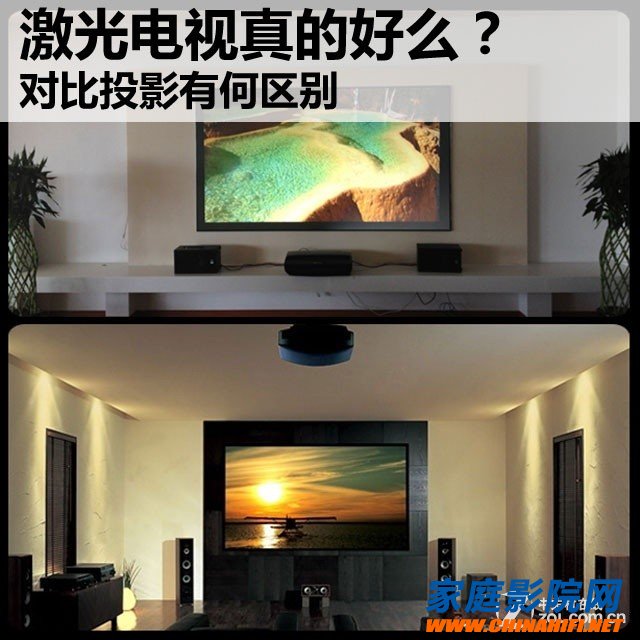
Is laser TV really good? What is the difference between contrast projection?
In fact, laser TV is not an unprecedented new gadget. As early as a few years ago, Sony, Mitsubishi and other foreign manufacturers have already launched similar products, but because the technology cost is too high, the price has not been accepted by the market. In the end, the market for laser TV products was not successful. With the advent of Hisense's 100-inch laser TV, the product has once again returned to everyone's sight.

Hisense Laser TV
A friend who has seen a laser TV will find that it consists of a laser host + a separate screen, which projects the image onto the screen through the laser host. In fact, from the working principle, the host of the laser TV uses the reflection of the laser source. Ultra short throw projector. But since it is called laser TV, it will be different in all respects compared with traditional projection.
2 difference one: different light sources
Seeing online reports that laser TVs use ultra-high pressure mercury lamps as the light source, this is obviously wrong, although similar to the projection, the light source is not the same. The reason why it is called laser TV is also one of the most obvious differences with projection. Laser TV uses solid-state laser as the light source, while most of the traditional projectors use ultra-high pressure mercury lamps.
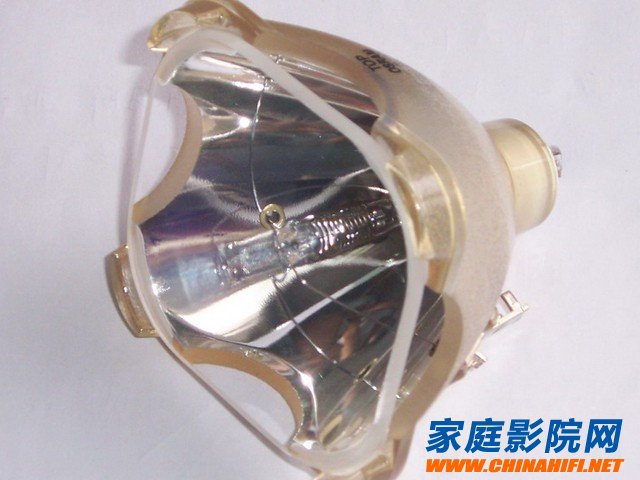
Ultra-high pressure mercury lamp for general household projection
The life of the laser source can reach more than 20,000 hours. It is calculated for 10 hours per day, and its life expectancy is at least 7 years, while the life expectancy is 8 hours per day for at least 8.5 years. The life of the ultra-high pressure mercury lamp is generally about 5,000 hours, calculated according to the use time of 8 hours per day, and the life expectancy is about 2 years. In addition, the statement that the light source gradually weakens with the passage of time is true for the ultra-high pressure mercury lamp used in the projector. In theory, because the life of the laser source is longer, the brightness will not be attenuated for a long time, but whether it is so or not is the user's own comparison.

Laser source
The projector's light bulb, like the car's tires and printer's ink cartridges, is a consumable and needs regular replacement. Some people may think that replacing the light bulb is not only troublesome to operate, but also costs for maintenance. It is felt that the laser can be maintenance-free in a short period of time and cost-effective. In fact, because the laser life is long, it is a one-time investment for maintenance, but because of the high cost of the laser itself, the one-time investment is relatively large. The ultra-high pressure mercury lamp is a type of installment payment. If the laser life is the ruler, the maintenance time of the traditional ultra-high pressure mercury lamp is about 4-5 times, and the ultra-high pressure mercury lamp with good quality on the market is only 1000 yuan. about.
3 difference two: installation method
Whether it's a laser TV or a home projection, the application involves an installation problem in the home. Since the projection of a large-size picture requires a projection distance guarantee, in general, in order to ensure the picture quality and the overall aesthetics of the living room installation, most households use the projector to adopt the hoisting method.
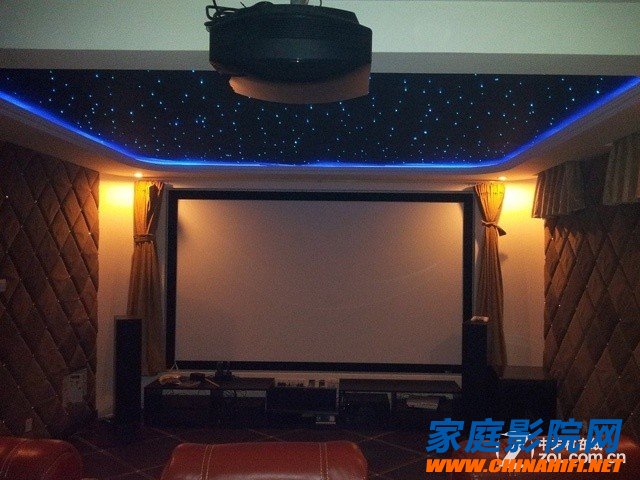
Home theater projections are mostly hoisted
Of course, the projection can also use the desktop front projection method, but if someone walks between the projector and the projection screen, it will block the screen and affect the viewing effect. Generally, a projector that does not have a short-focus function requires about 3.3-3.6 meters to project a 100-inch screen, and also has a distance of about half a meter. Therefore, users need to pay attention to the available space when purchasing a projector. enough.
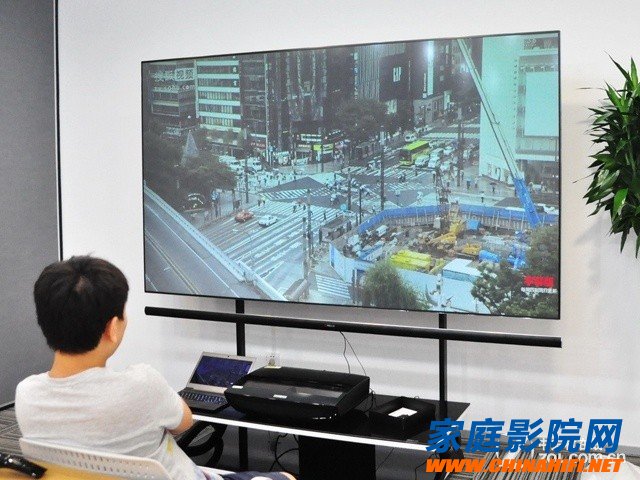
Laser TV can be placed flat on the TV cabinet
The laser TVs now on the market, including Hisense, use the projection principle of reflective short-focus, which can project 100-inch images at a distance of about half a meter. Therefore, it is not necessary to hoist like a projector. Like a flat-panel TV, the laser TV and the screen can be placed flat on the TV cabinet, which is more suitable for a small-sized family to pursue a large screen.
4 difference three: anti-environmental light
Although the laser TV uses a high-brightness laser source + ultra-short-focus projection distance, as long as it uses light reflection imaging, it will never avoid the anti-environmental light factor, so the use of laser TV in the living room can ignore the ambient light source interference. I do not agree with the statement. For the anti-ambient light of both laser TV and traditional projection, it can only be said that there will be differences because of the different projection principles, but it cannot be generalized.
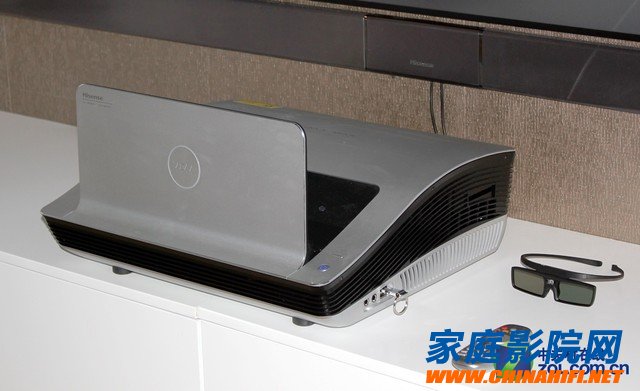
Hisense's latest 100-inch laser cinema system uses the principle of reflected short focus
Since the laser TV adopts the principle that the reflection is a short-focus projection, the projection distance is shortened, and the interference of the ambient light is actually reduced to some extent. In addition, it is equipped with a reflective screen that directly reflects the light from the laser host into people's eyes, so people will see a clear picture. The traditional projection requires a certain projection distance, and the good projection screen is more comfortable for people to observe the shadow. Most of them use the principle of diffuse reflection to avoid direct reflection of the projected glare, so the performance against ambient light is relatively weak.
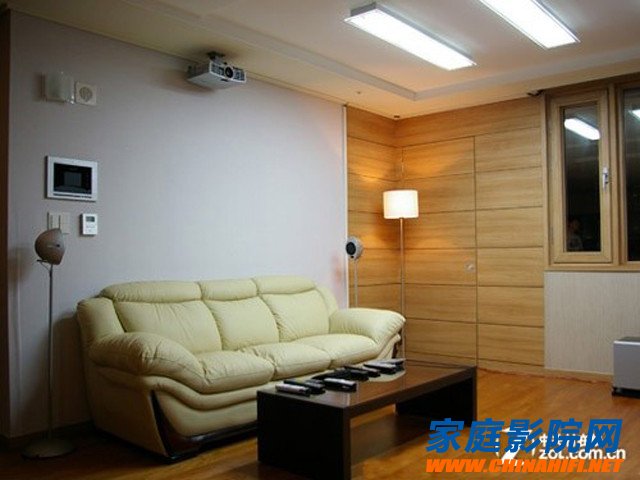
Home living room lifting home projector renderings
Summary of the full text:
Whether it is a laser TV or a home projector, it exists to meet the needs of users for large screens. Because of the different attributes, there will be differences in all aspects, but depending on the needs of users, it is not possible to subjectively comment which is better. After talking about the technology, let’s take a look at the price. Now the price of a laser TV is about 6-10 million yuan. The price of an entry-level full HD home projector is less than 10,000 yuan, and the middle end is 1-2 million. Between the yuan, compared to the price of laser TV is still a small expense for an ordinary family, of course, except for local tyrants. WeChat: cnhifi.
Flat Linear High Bay Light 320W
Remote Control Flat High Bay Light,UL Flat Linear High Bay Light,New Flat Linear LED High Bay Light,170Lm/W Flat Linear LED High Bay Light
Vietnam JJ Lighting Company , https://www.vnjjlighting.com